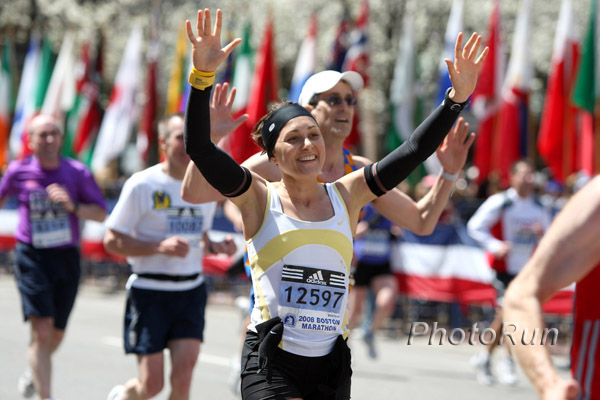Childhood Soccer—A Playground Bursting With Benefits

There are few sports which are popular and practiced all over the world. But no matter what country a child lives in, when a checkered ball is kicked towards them, they understand the message: Let’s play soccer! Pelé, Maradonna, Beckenbauer, Zidane, and Ronaldo have all achieved international superstardom with their magical footwork and skill. Children around the world wear jerseys with their hero’s name or number, and practice endlessly to perform the skillful ball tricks of their preferred star. According to the FIFA (Fédération Internationale de Football Association), 265 million people play soccer worldwide, making soccer arguable the favorite sport of all time, and definitely a childhood favorite.
The Multiple Lessons of Soccer
As young children develop motor skills, they are naturally drawn to the challenges of playing with, and controlling, a ball. And not only does soccer provide these challenges, but at the same time it develops endurance, strength, coordination skills, cognitive ability, and social lessons. And to play a good game of soccer, a child needs a positive attitude and tactical understanding of the games ebb and flow.
What children learn on a soccer field, helps them in other social environments:
- Children learn to play according to the rules of the game, and this lesson transfers not only to other sports, but to other social settings.
- By gaining better coordination through the many physical requirements of soccer, children learn to judge, determine and use their sporting talents successfully.
- In soccer children are forced to stop acting egocentrically and learn to be socially dependent.
- Due to its world wide popularity, soccer, more than other sports, lets children relate to other children across cultural boundaries. This can contribute to a more tolerant world view in later life.
Soccer encourages several physiological conditions. First there is endurance: children develop a relatively high aerobic-anaerobic threshold as their bodies must learn to run with or without the ball over prolonged periods of time. Children learn that strength, the ability to kick the ball hard and fast, is crucial in soccer. And soon they will have internalized the old soccer wisdom that you might not be able to win a soccer game with strength and endurance alone but they do enable you to prevent defeat!

Soccer also promotes speed and what is known as “Schnellkraft,” a term that means “speed strength” or “speed elasticity,” such as when a soccer player fires off in a short sprint, or leaps to strike a header. The repetitive training involved in perfected these skills, and their use in game situations, forces a child’s muscles to learn how to achieve speed strength.
An extraordinary benefit of soccer is that it allows a child to overcome two circumstances that are seemingly beyond his control: early sensory development and evolution! Every child loves soccer tricks—from dribbling exotically to juggling the ball on the knees and feet. Children spend hours practicing those skills (emulating their hero athletes) despite the fact that they are very likely to encounter initial frustration. When a child gains proficiency in these tricks, they are actually overcoming pre-ordained physical limits. Both children and adults are more coordinated in their hands than their feet. This is due to the stage of early sensory motor development in which infants experience their surrounding world through grabbing for and touching things. The feet are not so lucky, and generally are left on their own with little coordination development. The feet lagging behind the hands in coordination is also due to evolution: The lower extremities were used for locomotion while the arms and the hands were used for finer coordination actions. Consequently, there are more nerve endings in our hands than in our feet, giving the hands greater “natural” abilities. Soccer training counteracts the feet’s relative gross motor skills. The repetitive training of stopping and shooting the ball, dribbling and juggling cause the feet to learn muscle movements and gain abilities that would not be achieved otherwise.
Einstein or Soccer?
Soccer provides children with a surprisingly complex set of situations and circumstances. Just as Einstein interpreted space and time, so too a young child’s “soccer brain” is doing the same thing. Not only does a child have to be able to physically control the ball with his or her feet, but they also have to calculate space and time—such as the speed and arrival time of the approaching ball, the nearness of the opposing player, or the force needed to get the ball to a team mate before the opposing player enters the same space.
When little children play soccer on a marked field they comically congregate around the ball. There is hardly any cooperation, the field is not used in its full size and the speed of passes or kicks is wrongly estimated. This, however, changes as the child’s brain learns lessons of space and time. Children learn to use the right amount of strength to kick a pass; they learn to judge the speed of passes headed towards them; they use the entire space of the field; and they realize that each player is assigned a certain space within the field. So yes, your little soccer player might be a little Einstein!
Good for the Personality
A soccer game is won or lost in a common effort. This simple fact, combined with the innate desire to win, leads towards socialization of the individual. Generally, children who play a team sport are socially well-integrated, have friends, have less problems with their parents and master typical crises of childhood and adolescence more easily. Through their sport they have acquired conflict management skills as well as the ability to act with respect for others. Due to soccer’s popularity, children also experience social acceptance, recognition and support outside their team.
While positive personality development is a wonderful benefit of soccer, unfortunately there is one element of soccer that is being lost as the sport grows commercially: Playfulness. With youth soccer clubs dominating the sport from an ever earlier age, children are being deprived of the time to indulge their natural child-like urge to play. Dribbling, catching, throwing, passing or kicking on neighborhood lawns or streets is important to full childhood athletic development. (“There are No Unathletic Children“). Don’t let these spontaneous and exploratory athletic movements disappear from a child’s daily life. You can make sure your child has the best of both worlds. Children should not be specifically trained to a limited program before the age of nine, or even eleven. If parents want to register their young child (under nine) with a soccer club, make sure that the training is not too regimented, and includes “playtime” for the children.
If your child shows interest in soccer, boundless fun and a healthy development are almost guaranteed to follow. In this process, parents can and should take an active role—soccer can be played almost everywhere, at the park, in the garden, in the courtyard or on the lawn. Be like a kid-and go for a kick around with your child!
- Posted January 16, 2009
© Copyright 2009-2024 by Take The Magic Step®. All Rights Reserved.




